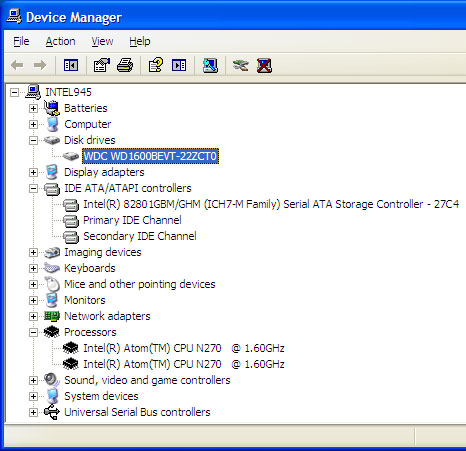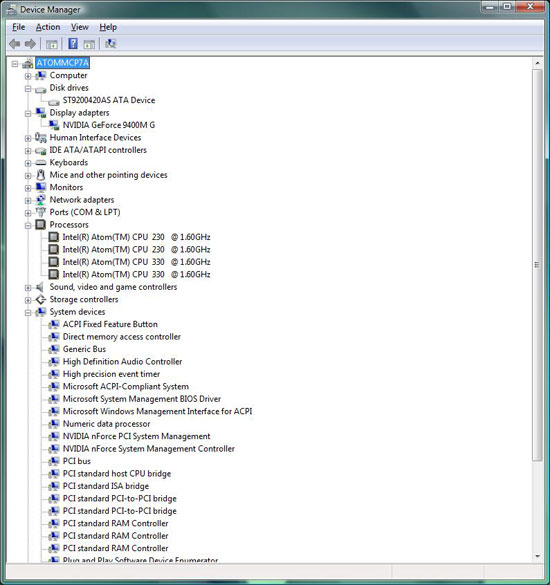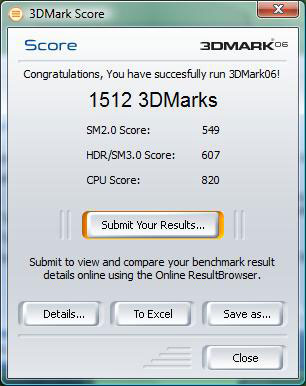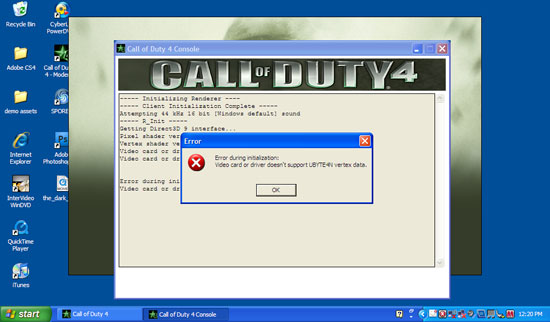NVIDIA's Ion Platform: Hands on at CES 2009
by Anand Lal Shimpi on January 13, 2009 12:00 AM EST- Posted in
- GPUs
Remember NVIDIA’s Ion platform, the neat little box we previewed last month? Ion combines Intel’s Atom processor with NVIDIA’s GeForce 9400M instead of the existing Intel chipsets.
NVIDIA invited me to benchmark Ion at CES. A cab ride down to the MGM in Vegas and soon I was escorted up to NVIDIA’s Ion room. Not big on partying, the Ion platform kept a neat, clean and alcohol-free room (the same can’t be said for its bigger GeForce brothers). Sitting on the table were two machines: an Acer Aspire netbook and an Ion reference platform similar to the one I looked at last month.

NVIDIA allowed me to benchmark the two systems in a handful of tests, unfortunately the deck was stacked in NVIDIA’s favor. The Ion reference platform had a dual core Atom 330, while the Acer Aspire had a single-core Atom N270. They ran at the same clock speed, NVIDIA’s platform just had twice the cores.

1.60GHz, 2 cores, 4 threads (2 per core) - it's the dual-core Atom 330. Unfortunately the Acer netbook only had a single core
Things got more unfair on the memory side. NVIDIA’s platform had 2GB of DDR3, while the Acer Aspire had 1GB of DDR2. The difference in memory technology was unavoidable, 945G doesn’t support DDR3, but the difference in memory size could’ve been avoided.

One core (2 threads) and a 5400RPM drive in the Acer netbook
Then there were differences in drives. The Acer netbook used a 5400RPM Western Digital drive, while the NVIDIA Ion reference platform had a 7200RPM Seagate drive in it. Simple things like launching Spore took less than half the time on the Ion system because of this difference.

The Ion platform had a more aggressive configuration
While I believe that the NVIDIA PR present wasn’t involved in the unacceptably different setups, someone was, and it made it so I couldn’t compare the two platforms. I could provide you with performance results here, or even usage impressions, but it wouldn’t be fair. I’ll wait until I have hardware in house before making a scientific comparison between the Intel and NVIDIA versions of the Atom platform.

3DMark 06 at 800x600, default settings, on the Ion platform with an Atom 330 and 2GB of DDR3
Obviously NVIDIA’s Ion will play games a bit better, or at least at higher quality settings. For example, you could run Spore on both the Atom + 945G setup and NVIDIA’s Ion at 800 x 600. The frame rates were comparable, but you had to run at Low quality for the 945G setup while you could run Medium on Ion.
Fundamentally I’m not sure I’d really see much of a benefit to Ion in a netbook. The biggest advantage is going to be full hardware H.264/VC-1/MPEG-2 decode acceleration, which you can also get from Poulsbo. The improvement in gaming performance will be there, but I’m not convinced that you’d want to game on a netbook in the first place. They are cramped and the integrated trackpads usually suck; you could always carry around an extra mouse, but that’d defeat some of the portability of a tiny netbook.

Call of Duty 4 won't run on the 945G equipped Acer netbook. NVIDIA's Ion fixes this, I'm just not sure you'd want to play CoD4 on it in the first place.
Now in a Mac mini-esque device, home file server, mini HTPC or larger netbook/notebook the Ion platform starts to make more sense. In the end I prefer having more options than fewer, so bring on Ion based designs and let’s see if/where they make sense.










29 Comments
View All Comments
Longboat - Tuesday, January 13, 2009 - link
I have noticed that this Nvidia and another pico computer from VIA (Google: Artigo) are being offered in a 5.25" form factor. These computers even have holes drilled for mounting into a drive bay. I am wondering what functionality a "computer within a computer" might have? Is there a device that allows drives to be shared internally?I could see an advantage with running this little atom processor to serve up music or check the mail, and then fire up the big rig for heavy lifting, but I fail to understand how this could be cleanly built.
The only way I can see is to have some wires coming out the back of the case and connecting both the big rig and the pico computer to a KVM switch and to an ethernet switch, and having all shared files on a server, like a windows home server box.
Am I overthinking this?
nubie - Tuesday, January 13, 2009 - link
Connect it to the back of the monitor, and make the pass-through part of the Ion system.I love the idea of 5.25" bays in a "micro rack mount" in some case that the entire front is bays from top to bottom, you could get 10 systems and a network switch, and another motherboard as a server(run a network boot on all of them and a raided Raptor setup in the server).
You could play ten player games on one system!
Or go the other way and have all systems in your house be Ions and only your main Server/Workstation with a hugely fast storage system and processor (4Ghz Core2 or i7).
In fact, if they could work out a system to stream the video out of the main system and the controls back to it you could stuff the main server with quad video cards and dual 4-core CPUs and play any video game on any PC/Screen in your house. Maybe even multiple games hosted on one server, either way you could put it in a separate room with loud fans and a huge case for cooling without driving yourself crazy.
Another option would be to integrate this platform on the motherboard or in the CPU of future Intel systems, for browsing the web or playing simple games/watching movies the i7 never even turns on, but once you need to play Crysis 3 or encode a movie it powers up. Imagine an entire desktop system using only 20watts, but fully capable quad-core + Atom Quad core using 150-200watts only when you need it.
anonymoose - Tuesday, January 13, 2009 - link
Another difference between Atom Z/Poulsbo and Atom N/945(or whatever) is that Atom Z/Poulsbo supports the C6 Idle power state. This state was first introduced with Penryn, and allows the processor to shut off almost completely when idle.Soulkeeper - Tuesday, January 13, 2009 - link
I'm wondering how much these would retail forif they could be had for 150 buck or so they'd make an impressive gpugrid addition.
4 threads on the atom is nice even tho 512KB of cache would seem to starve them.
would be an interesting toy
IntelUser2000 - Tuesday, January 13, 2009 - link
It has been changed quite few months ago to update support for 2GB of memory.nubie - Tuesday, January 13, 2009 - link
Am I the only one who wants 4 of those boxes for their house, last year?I think the market is ripe for these to be integrated into TV's and projectors, heck even the head-unit on my car, or the backrest.
I want it screwed into the VESA pad on the back of a few 15-19" LCD's scattered all around my house.
In short, for browsing the web and playing WoW style games (silkroad, maplestory, some emulation and retro-gaming), this is a godsend, the power consumption and raw power are mind-boggling for something that size. (Kids would gladly watch a movie or play some games on a laptop that small, heck get them a wireless Xbox360 controller and let them go to town.)
I just wish that Intel would get their act together and make this work. (Or that AMD would release something related to their initiative to bring CPU/Video to a single chip)
tonjohn - Tuesday, January 13, 2009 - link
Oh, I'm right there with you!I have a great need for a product like this and would probably pick up several of them as long as the price is reasonable.
yyrkoon - Monday, January 12, 2009 - link
As far as I am aware Intel can not keep chipset makers from using atom ( legally ), and making it financially difficult seems to me would impede on the fair use act (or one of these, sorry can not think of the name ).Either way, Asus has an nVidia 9300/9400 netbook for sale on newegg right now. Or, at least they did a couple of weeks ago when I read your article. Tis expensive though at ~$700 usd for a freeking netbook . . .
Khato - Tuesday, January 13, 2009 - link
Heh... Everyone does realize that Intel making it financially difficult to implement the ION platform is no different than NVIDIA not allowing SLI on platforms without a NVIDIA chipset (until they had no other choice in the matter with the Core I7 platform), right? They're both matters of dangling "Here's the product you want." with a string attached that you have no use for.As for cutting NVIDIA out of the atom platform entirely, well, that's easy... EoL Diamondville.
Anyway, Intel's motivation in this matter isn't so much profits actually, the margins are -far- higher on atom than the 945GSE. Rather, it's the limiting of the platform that's key here - with the 945 it's the graphics capabilities, with Poulsbo it's the memory. A chipset without limitations opens up more of the low end celeron/pentium market to Atom, and I expect that's what Intel's attempting to avoid.
sprockkets - Tuesday, January 13, 2009 - link
If history is any indication (see what happened to VIA during the P4 days, and Ati the moment AMD took over them), and how difficult it has been for AMD to even sue Intel over anti-trust allegations, Intel isn't worried a bit.Intel loves making money off a processor + chipset. Protecting that revenue stream is very important. Want an Atom processor? Take a crappy chipset with it. Take it or leave it.